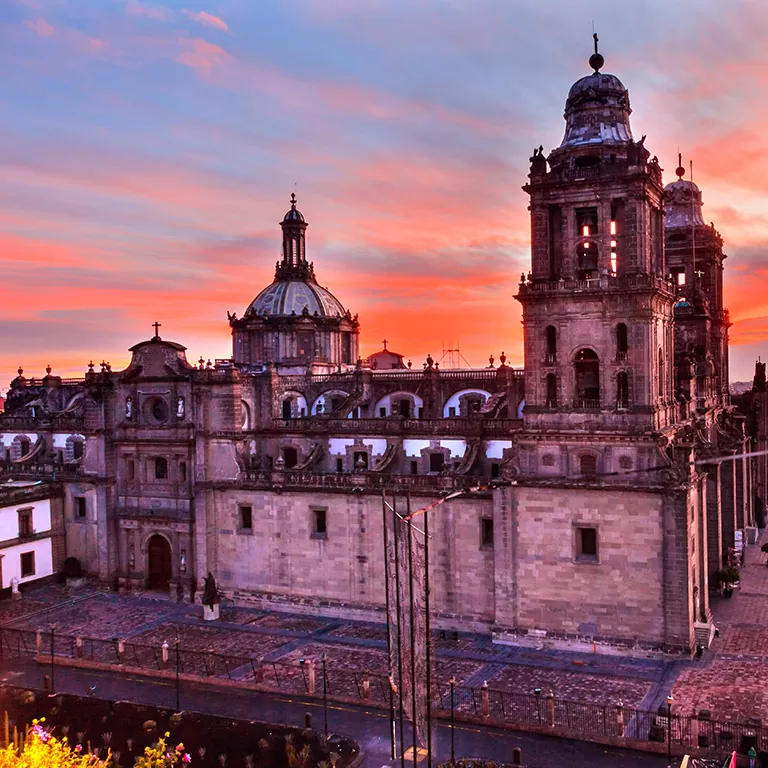
Founded in the 15th century, Mexico City, the oldest metropolis in the Americas, has undergone many transformations throughout the centuries. From capital of the Aztec Empire to capital of Mexico, from Mexico Tenochtitlán to its contemporary name, it was colonized and destroyed by the Spaniards in 1524, was rebuilt according to the standards of the European explorers, and was finally freed by the Mexican Revolution and reached incredible numbers. Even with so many transformations, Mexico City is still the country’s most developed urban center, its political, economic and cultural reference, and one of the most important cities in North America. Currently, it’s considered a global alpha city, that is, a strategic territory for the functioning of the global financial and commercial system.
The Mexican capital occupies the eighth position among the richest cities in the world, with a GDP of 390 billion dollars, with the expectation of doubling this amount by 2020, which will move it up one position in the ranking. In Mexico, the greatness of the capital corresponds to 21% of the country’s GDP (over 34% if we consider its metropolitan area). These numbers favor the population of over 9 million inhabitants of the most populous city in the country and in North America, with over 50 thousand industries. The geography of the city also shows impressive numbers: from its minimum altitude of 2.2 thousand meters above sea level to its peak of over 5 thousand meters, due to its formation of mountains and volcanos.
Its tropical situation and its altitude produce an oceanic climate, with average annual temperatures that vary between 12⁰C and 17⁰C, depending on the altitude, with heavy rains in the summer – sometimes with thick hail. Nothing that hinders a tour of the beautiful Historical Center of Mexico City, a UNESCO World Heritage Site since 1987. Begin the visit at El Zócalo or Constitution Plaza, the fourth largest square in the world, and the city’s main venue for public events. With strong remembrances of the colonization, with its colonial architecture buildings reminiscent of Madrid, strangely enough, it is in this square that “O Grito” (“The Shout”) takes place, a ceremony celebrating the start of the War of Independence.
In the surroundings of Zócalo, more precisely, to the north, we find one of the oldest Roman Catholic cathedrals in the American continent: the Metropolitan Cathedral of the Assumption of the Most Blessed Virgin Mary into Heaven. One of the most visited tourist points in Mexico City, the beautiful episcopal headquarters of the Archdiocese of Mexico is preserved by UNESCO. On the other side of the square, the area where the imposing National Palace is situated – occupied by the ruling class since the Aztecs – even today shows traces of the Empire of Montezuma II, priest and chief of the Calmecac, the school for the higher classes in the 15th century. The Templo Mayor (the Greater Temple), one of the major temples of the Aztecs, is another important touristic spot. In post-classic Mesoamerican architectural style, it was built in honor of two gods: Huitzilopochtli, the god of war, and Tlaloc, the god of rain and agriculture.
All of this history is registered in Mexico City’s many museums. Art is duly recognized in the historical construction of the city, which can be seen in its more than 150 museums of Colonial Mexican art, Modern art, and Contemporary art. Outstanding are: the Museum of Anthropology and History; the Tamayo Museum (with a collection that includes works by Picasso, Klee, Kandinsky, and Warhol); the Museum of Modern Art (with the major Mexican artists of the 20th century: Rivera, Orozco, Siqueiros, Kahlo, Gerzso, Carrington, Tamayo); the Carrillo Gil Art Museum; the University Museum of Contemporary Art; the Soumaya Museum (with the largest private collection of Rodin sculptures outside of Paris, and a large collection of works by Salvador Dali); and the iconic Frida Kahlo Museum (dedicated to the works of Mexico’s most famous artist).











